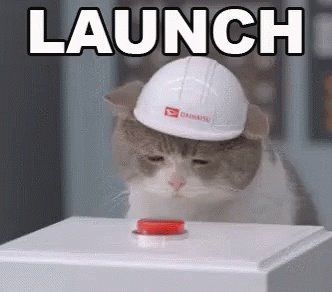How I go about product launches and why?
Apple vs Dyson vs P&G vs Xandro! Let's goooo!
👋 Hola! Welcome to Out of Singapore. This is Shan and I write every Sunday on business and marketing. Sometimes I feel my newsletter should be further targeted - for e.g. - only write about livestreams or TikTok or DTC marketing. I talk about so many different things - events, advertising, team & hiring (will write soon), supplement ingredients, social media, and so on. I should find a niche soon, or maybe not? What do you think?
Today is about a long-standing topic. Something I have been struggling for the past one year. We have launched and re-launched products without much success. Products from 2023 - NMN and magnesium - have done well. 2024 launches - DNA test, Zinc, and Lean XP - have been a flop show. Clearly the launch process that worked for NMN and Magnesium isn’t working for the new launches. Before I answer this, let’s look at these things today
What’s a product launch?
How Apple, Dyson and P&G launch their new products?
Comparing and contrasting Dyson and P&G launch approach.
How I launch a product?
Let’s get started.
1. What’s a product launch?
The process of introducing the product to the market (consumers, retailers and resellers) is called Product Launch. The fundamentals remain same for physical and digital products.
A lot goes behind the scenes before a product makes it in front of consumers. And a lot happens after it is showcased to consumers. For a physical product, here is how the flow would be
Ideation and alignment of stakeholders
Product testing and demo. Incorporate feedback and make changes.
Forecast expected demand
Produce the first batch for market
Introduce to marketing and sales stakeholders - retailers, resellers, streamers, affiliates, KOLs (a smaller version of this will happen during product testing).
Incorporate feedback (whatever is possible, and schedule remaining feedback for future)
Introduce to consumers. Educate, beta test and share results.
Expand the market - new consumers, new channels (if needed) and more advertising
If you notice, this is a long careful process. A product can fail due to the following four reasons -
The product does not deliver what it promises.
Stakeholders not aligned and not convinced.
Consumers are not educated or don’t like the product.
The brand does not make enough effort to sell the product.
In simple terms, product launch is a long involved process that continues much after a product has been introduced to market. Unless the product reaches a stable monthly revenue, you should consider the product is still in launch phase.
2. How Apple, Dyson and P&G launch their products
The global launch - iPhone 16
Let’s read about Apple iPhone 16’s launch process and activities. Note that this is compiled by ChatGPT and I have edited the information.
1. Product development and planning
The company focused on integrating advanced features, such as the new A18 chip and enhanced AI capabilities under "Apple Intelligence," to align with user expectations and maintain a competitive edge.
2. Pre-launch Preparations
Manufacturing: Apple collaborated with manufacturing partners to prepare sufficient inventory for the anticipated demand.
Regulatory Approvals: They secured necessary certifications and complied with regulations across various markets to facilitate a smooth global rollout.
3. Marketing and promotion Prep
Event Announcement: "It's Glowtime" was scheduled for September 9, 2024, at its California headquarters.
Teaser Campaigns: Leading up to the event, Apple released teasers and cryptic messages to build anticipation and engage the audience. This was on its social media and creator collaborations.
4. Launch event to generate buzz
On September 9, 2024, Apple unveiled the iPhone 16 lineup, highlighting features like the A18 chip, advanced AI capabilities, and new design elements. This was followed by live demonstrations and interaction with the new device.
5. Post-launch activities to sustain demand
Pre-Orders and Sales: Pre-orders for the iPhone 16 began on September 13, 2024, with official sales starting on September 20, 2024.
Marketing Campaigns: Apple launched comprehensive marketing campaigns across various media platforms to sustain consumer interest and drive sales.
Software Updates: iOS 18 was launched on 18 Sep 2024, Apple Intelligence was launched on 28 Oct 2024.
That’s for iPhone 16. They launched a few more products on the side, some were lacklustre like AirPods Max.
The local launch - Dyson Airstrait
Dyson holds a special place in my heart. I don’t own any of its product, but I am surprised how well the brand has evolved. It is probably the only brand that taken advanced research and captured a large consumer base. You will find them in homes, in public toilets, airports and offices. Here is how they launched their AirStrait hair dryer in Singapore in the words of ChatGPT.
“Dyson introduced the Airstrait™ straightener in Singapore on February 29, 2024. To commemorate this launch, Dyson hosted an immersive event from March 21 to 24, 2024, at the Cloud9 Piazza in Jewel Changi Airport. This event provided attendees with hands-on experiences, interactive demonstrations, and styling masterclasses led by professional hair stylists, allowing them to explore the innovative features of the Airstrait™ straightener firsthand.”
“By organizing such experiential events, Dyson effectively engages consumers, allowing them to interact with new products in a controlled environment. This approach not only educates potential customers about the product's capabilities but also generates excitement and anticipation, contributing to a successful product launch.”
Unlike Apple, Dyson did not release the product globally. It released the product in USA in May 2023, and then Singapore and UK in February 2024 and finally in Australia in June 2024. Dyson focuses on specific regional demonstrative events.
I wanted to write about P&G product launches here, but it will be better to directly compare it against Dyson. Let me how do you like it?
3. Dyson vs P&G - launch approach?
Launch concept - Immersive, groundbreaking vs incremental
Dyson: Emphasizes disruptive, cutting-edge technology and innovation as the core of its launches. Products like the Dyson Airstrait and 360 Vis Nav™ are marketed as groundbreaking. Launches showcase superior engineering, using live demonstrations or immersive events.
P&G: Focuses on incremental improvements or new formats of everyday essentials. Innovations are often rooted in sustainability or convenience but are more evolutionary than revolutionary.
Target Audience - Techies vs mass market
Dyson: Targets tech-savvy, design-conscious, and premium-seeking consumers. Launch events and marketing materials emphasize the luxury and exclusivity.
P&G: Targets mass-market consumers across different income levels. Launches appeal to broad demographics, emphasizing practicality, efficiency, and affordability.
Launch Event Style - experiential vs omnichannel
Dyson: Hosts experiential and interactive launch events, such as the Airstrait’s launch at Jewel Changi Airport in Singapore. Focuses on high-profile venues and curated masterclasses. Relies heavily on in-person demos to communicate product value.
P&G: Introduces products through omnichannel campaigns, including retail partnerships, influencer marketing, and mainstream media. Does not rely as heavily on in-person events but instead focuses on leveraging its vast distribution networks and market presence.
Post-Launch Strategy - in-store demos vs retail expansion
Dyson: Relies on word-of-mouth, user testimonials, and repeat engagement through follow-up events and in-store demos.
P&G: Focuses on scaling quickly through retail penetration and promotions. Utilizes continuous marketing campaigns and consumer incentives (e.g., coupons, partnerships) to maintain momentum post-launch.
How did you like the information in this section? This was curated by ChatGPT and edited by me.
3. How do I launch new product?
My approach is rooted more towards P&G product launch model. Before I shared my process, here are three factors that determine a brand’s launch process -
Current Reach: Existing audience and market presence. This determines the test audience, and forecast for the first few months. This determines the advertising budget as well.
Available Resources: Cash in bank, human resources and partners. How much can you realistically put behind a product launch and within what period (one day, one week, one month)? Do you have people to execute and make it happen?
Product Portfolio: Is the product your main product or a product extension. What is the purpose of the specific product?
For us, our reach , resources and product portfolio - are all limited. We are small brand, with hopes to grow large (we will, lot more effort required, but yes we will grow).
Here is how I go about the launch -
Stage 1 - Test with small audience. The test helps understand if consumers and partners like the product or not. Does the product need changes?
Stage 2 - Based on response, determine if it will be big launch or small. If the response is lacklustre, partners show low excitement, then I dial down the launch activities and prepare less inventory to save on cash.
Stage 3 - Based on stage 2 response, I will plan activities. If the product seems like a big success, we will organise large live streams, spend on advertising campaigns, send emails, PR and social media promotions.
Stage 4 - Re-assess the results from stage 3 for further investment in terms of cash, inventory and marketing. If the response is okay okay and the returns are low, I will turn down the cash investment. If it shows promise, I will bear the burden and continue trying new ideas.
I follow low-investment-test-incremental-return approach. This prevents us from going bankrupt, and do vain activities.
Finally, I prevent scaling a product in the first six months. The first six months is when feedback will come in. That helps us improve the product when we scale later. This prevents unnecessary loss in terms of wasted packaging materials, raw materials and marketing budget. We have to sure that the product is safe and delivers the promises before scaling it to larger audiences.
This post became too long. I have more stories to share. My two recent launches took more than 3 months to bring them to market. October launches are getting launched at the end of Dec. There is so much to share. But I will stop here today.
Let me know how did you find today’s post?
Thanks for reading again. Please press the heart button if you liked the post. If this can help someone in your network, please share the link. If you have feedback for me, please write back without any worries. I won’t snap at you. 😅
My mind has been completely blank this week and especially today. I couldn’t figure out what to write in the morning. I was lost! This is what happens when I don’t sleep on time and wake up on time.
2024 is closing soon. It has been a lucky year. I survived and thrived. I have corrected mistakes I made in my personal life. Moved over them. 2024 had tensions, but ended in peace. This year has opened up possibilities for 2025. It have lot of hope for 2025.
Why does this make me cry?
Jisoo’s Flower, and now Rosie’s Apt have made me a fan! Nothing compares to them. 🥹
Thank you so much for reading again. Wish you a great week ahead!








Hi Shan,
I believe your brand will grow large!
Good luck will surely favor you in 2025! Because destiny never fails to reward those who work hard and dream big!
Let's GO GOGO!